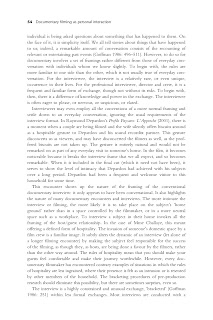Architectural historian and theoretician, Siegfreid Giodion declared:
Still photography does not capture them clearly. One would have to accompany the eye as it moves: only film can make the new architecture intelligible
Les Mystères du Château de Dé (1929, Man Ray)
Rien que les heures (1926) Alberto Cavalcanti
The Architect & The Painter (2011 documentary)
Architectures of Illusion: From Motion Pictures to Navigable Interactive Environments
Thomas, Maureen Penz, Francois
2003
Urban Cinematics : Understanding Urban Phenomena through the Moving Image
Penz, François Lu, Andong
I have sent emails to filmmakers/experts in both architecture and film:
Marc Boumeester is currently coordinator and lecturer at the Royal Academy of Art in The Hague, as developer/lecturer at the Delft University of Technology, Delft School Of Design department of Architectural Theory and as developer/lecturer at the Delft University of Technology department of Media-studies. This combination gives opportunity to further develop the newly found field of expertise, linking directly architecture and public space to the application of unstable media techniques in order to come to a better understanding and use of these forms of communication, also embedding them directly in the curriculum of the various educational institutions. Besides this he is working as a free-lance consultant. His networks span from the obvious directly work related to the more glamorous such as the International Art Experts Forum at the ARCO in Madrid.
Alison Butler
Job Title:
Senior Lecturer in Film
Responsibilities:
Co-convenor of Alternative Forms in Film & Theatre
Areas of Interest:
Research interests are in alternative and artist's film, cinematic time and space, and women's cinema.
Professor François Penz Dip Arch PhD
Professor of Architecture and the Moving Image
Fellow of Darwin College
Director of Studies for Clare Hall and Darwin College
Studies and teaches the history of the relationship between Cinema and Architecture in order to inform contemporary digital moving practice with a view to propose new modes of communication in architectural and urban issues.






























